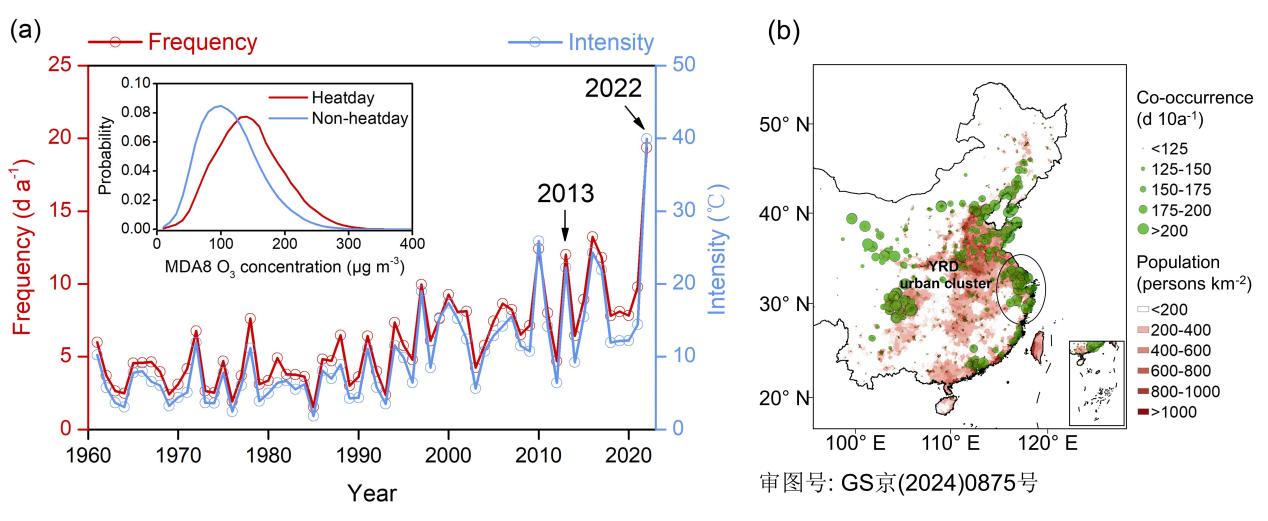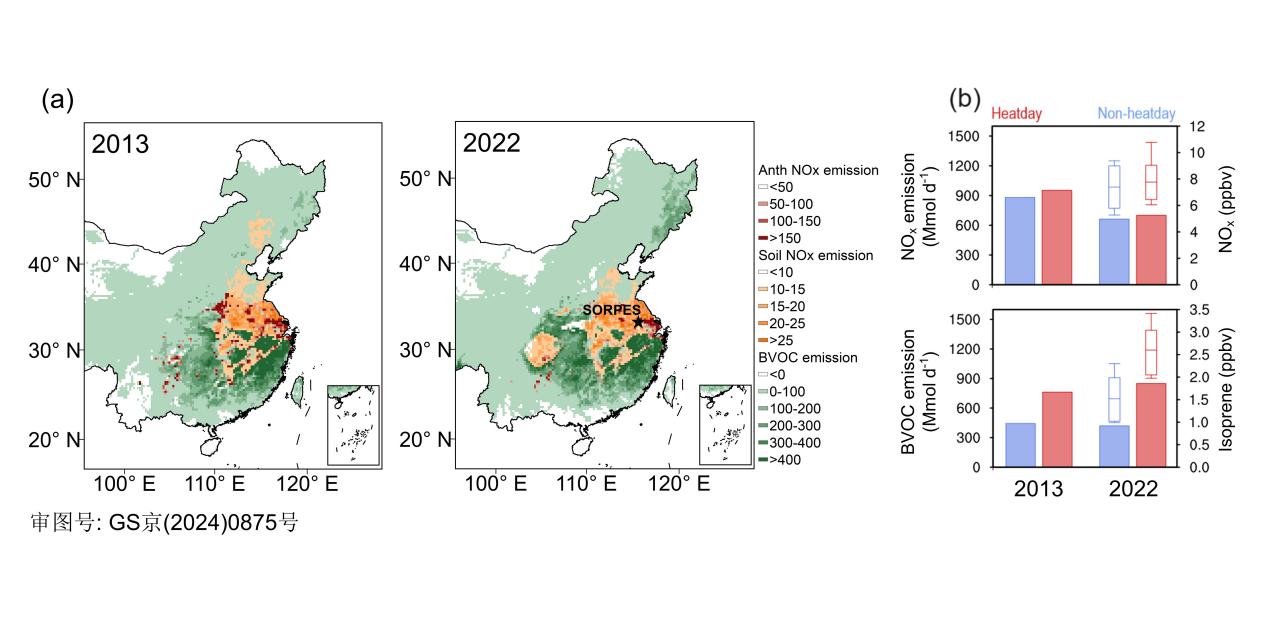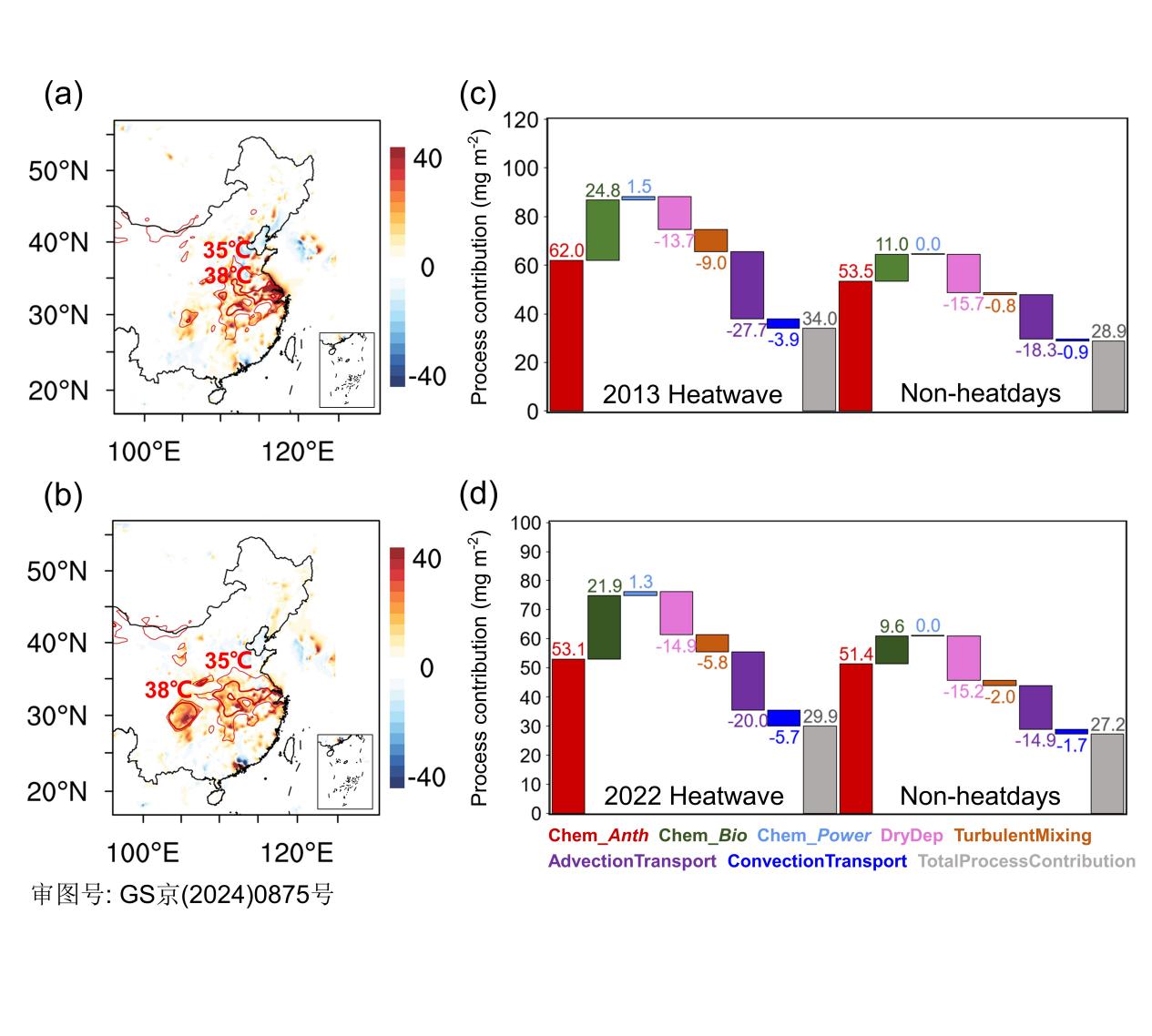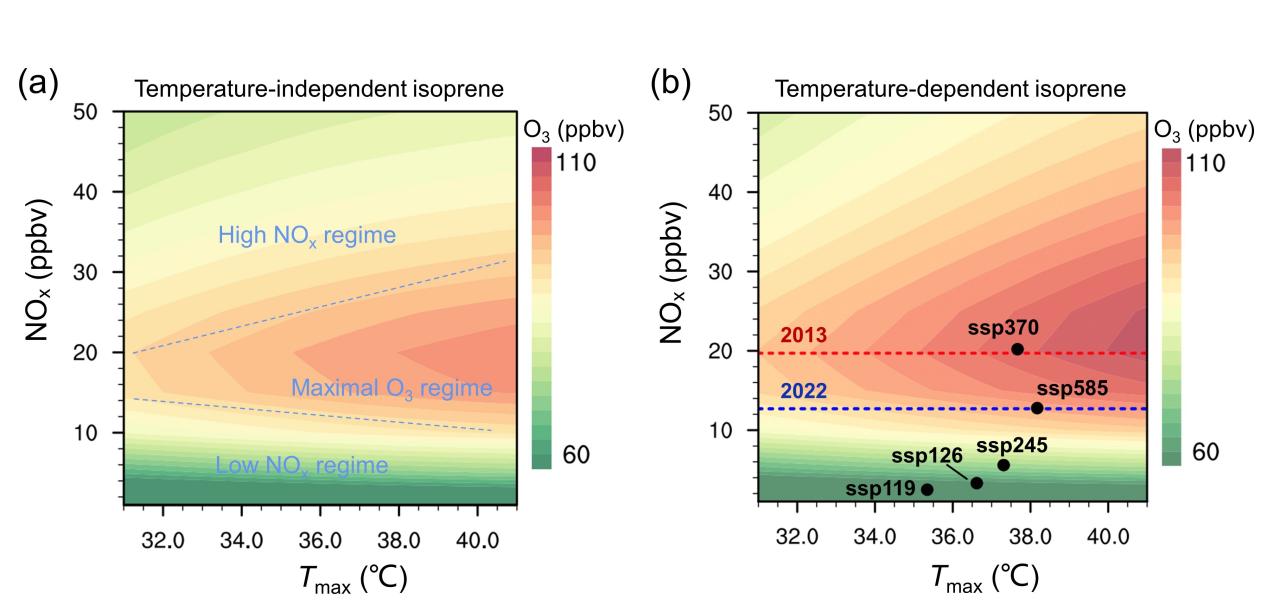Intensive human activity has brought about unprecedented climate and environmental crises, in which concurrent heatwaves and ozone extremes pose the most serious threats. However, a limited understanding of the comprehensive mechanism hinders our ability to mitigate such compound events, especially in densely populated regions like China. Recently, Prof. Xin Huang and Associate Prof. Mengmeng Li from the School of Atmospheric Sciences at Nanjing University published important findings titled “Coping with the concurrent heatwaves and ozone extremes in China under a warming climate” in the journal Science Bulletin (IF=18.9). Based on field observations and climate-chemistry coupled modelling, this paper elucidates the linkage between human activities and the climate system in heat-related ozone pollution. Prof. Xin Huang is the corresponding author of the paper, and Associate Prof. Mengmeng Li is the first author.

Figure 1. Exacerbated summertime ozone pollution in China as the climate warms.
In China, it is observed that both the frequency and intensity of heatwaves have almost tripled since the beginning of this century (Fig. 1a). Nationwide observations of surface O3 at thousands of monitoring stations across China indicate more severe ozone pollution during heatwaves than that on non-heatdays (Fig. 1a), with the summer-mean MDA8 O3 concentrations and the probability of MDA8 O3 exceedance increased by 30%. Notably, the abnormally enhanced ozone and sustained high temperatures frequently co-occur in the urban areas of mid-eastern China (Fig. 1b).
Evidence from field measurements, satellite retrievals, and model results all confirm the significant increase in human and biogenic emissions during heatwaves. The model results show that under sustained high temperatures, the biogenic volatile organic emission from vegetation nearly doubled, confirmed by a significant increase of ambient isoprene concentration from filed observations and formaldehyde column from satellite observations during heatwaves (Fig. 2). Additionally, statistical data and satellite observations also show a nearly 30% increase in the power plant emission during high-temperature events (Fig. 2).

Figure 2. Heatwave-boosted anthropogenic and biogenic emissions in China.
Based on field observations and climate-chemistry coupled modelling, this paper show that persistent heatwaves during the extremely hot and dry summers of 2013 and 2022 accelerate photochemical ozone production by boosting anthropogenic and biogenic emissions, and aggravate ozone accumulation by suppressing dry deposition due to water-stressed vegetation, leading to a significant ozone increase in China’s urban areas (Fig. 3).

Figure 3. Physical and chemical interactions exacerbate ozone pollution within the boundary layer during the persistent heatwaves in 2013 (upper panels) and 2022 (bottom panels).
Model calculations demonstrate that the sensitivity of ozone to heat is significantly influenced by emissions from human activities (Fig. 4). China’s clean air initiatives over the past decade have altered the relationship between ozone and temperature in urban areas. The CMIP6 GCMs predict that energy-intensive and high-emission scenarios are likely to exacerbate the co-occurrence of heatwaves and ozone extremes. This poses a great challenge to human well-being in Chinese megacities and other developing regions. Developing a synergistic clean air and climate mitigation strategy is expected to offer significant environmental and climatic co-benefits to sustainable urban development.

Figure 4. O3-temperature relationships under varying NOx conditions calculated by the photochemical box model.
This study is funded by the National Key Basic Research Development Program of China (2022YFC3701105), and the National Natural Science Foundation of China (42293322 and 42275100).
Article link: Mengmeng Li, Xin Huang*, Dan Yan, Shiyi Lai, Zihan Zhang, Lei Zhu, Yuting Lu, Xinyi Jiang, Nan Wang, Tijian Wang, Yu Song, Aijun Ding, Coping with the concurrent heatwaves and ozone extremes in China under a warming climate, Science Bulletin, 2024, https://doi.org/10.1016/j.scib.2024.05.034.
